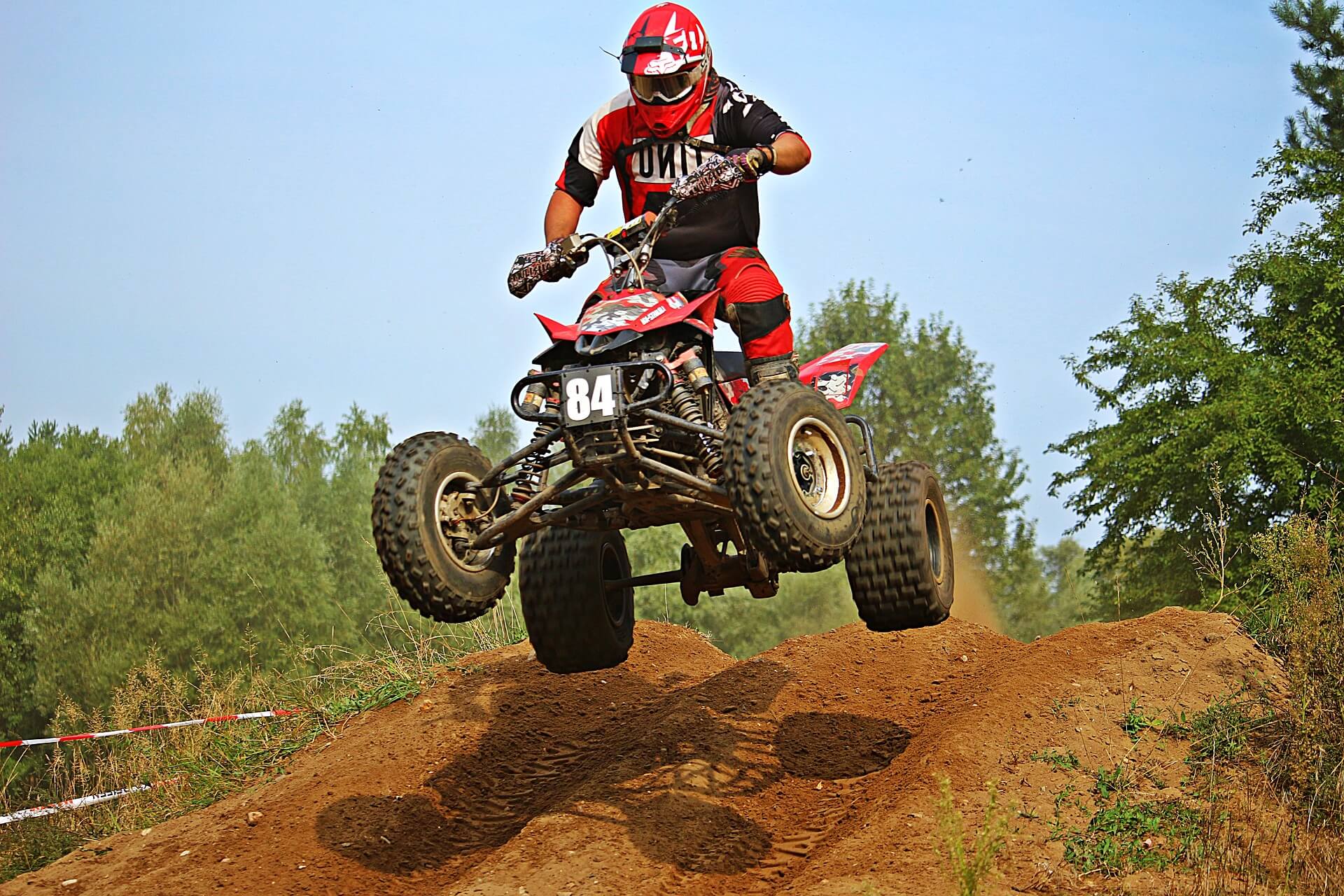Summer is right around the corner, and beaches will be filled to the brim with people hoping to have a great time. How do people do that? Beach activities! From volleyball, football, and water activities, all the way to riding different vehicles.
Today, we’ll teach you how to safely ride ATVs on the beach so that you go home in one piece every time.
Have you read our recommendations for all terrain adventuretires here.
1. Size
The very first thing that you need to decide upon before partaking in an entertaining activity such as ATV riding on the beach will have to be the size of the vehicle. Every age will be compatible with a specific size range of ATVs.
If you want to enjoy this activity with your child, they’ll have specific ATVs catered to their bodies that they can fully control and operate without facing any trouble.
As a parent or a bigger sibling, or even just by yourself, your vehicle will be much more advanced, suitable for rougher environments, and will have plenty of controls that you’ll be able to manipulate.
Consequently, you must, at first, speak with the provider of the service and enlighten him with all of the critical details such as weight, age, and height of whoever wishes to ride an ATV on the beach.
2. Safety Gear
We always see it in movies; people riding ATVs with their swimming suits such as trunks only, or bikinis, or one-pieces. All of that is not, at all, proper attire for riding an ATV. No matter how proficient you are or how easy the activity might seem, an accident can be lurking at any time just around the corner!
Proper safety gear will carry you through that as nothing else would, so you need to wear:
- A helmet
- A full-body suit to cover all of your joints such as knees and elbows
- Extra joint cover-up and protection
- Goggles
- Gloves
- Proper footwear
3. Training
Riding an ATV for many people can be a novelty. Hence, an adequate training program is a must before you come anywhere near the vehicle.
An authorized trainer would be present on the scene in order to walk you through all of the controls, a brief of how the vehicle operates, how you can deal with some easy repairs that you might need to do mid-tour, and of course, how to stay completely safe on top of the ATV.
Bottom line is: do not get anywhere near the ATV before fully taking and understanding the training program at least once.
4. Know Your Terrain
If you’re new to the area and this is a new beach that you’ve never been to before, try to walk around and know the landscape. Check out the terrain that you’re going to take later on so that you’re sure of its safety; no fallen logs or anything that could cause a terrible accident.
Also, this tour will allow you to get to know the environment better and what kind of sand you’ll be crossing on your ATV. That will undoubtedly boost your experience, hence your confidence on top of your ATV.

5. Vehicle Safety
This rule goes for riding any type of vehicle anywhere! Before you turn on the vehicle, check all of its basic parts, such as the engine, motor, tires, lights, and brakes. All of that has to be working optimally before you get on top of an ATV.
That is especially important when dealing with a rental service where the vehicle could’ve been used hundreds and hundreds of times before you. Consequently, you must insist that your provider try out the ATV and make sure that it’s working perfectly without any troubles.
6. Stay Sober
And last but certainly not least, everyone knows the enticements of the beach. A beer here and a margarita there, everybody wants to enjoy a few drinks at the beach.
Nevertheless, if you intend to rent an ATV or ride your own, then keep the drinks for after that. Don’t EVER drink and drive any type of vehicle anywhere.
Final Thoughts
That will be a wrap on how to safely ride ATVs on the beach. Don’t forget that enjoying your time doesn’t have to end in a catastrophe.
Just stick to the guidelines, listen carefully to the provider of the service, wear all of your safety gear, and listen to your gut. If you feel like there’s something wrong with the vehicle, stop immediately, get off, and ask for help.

